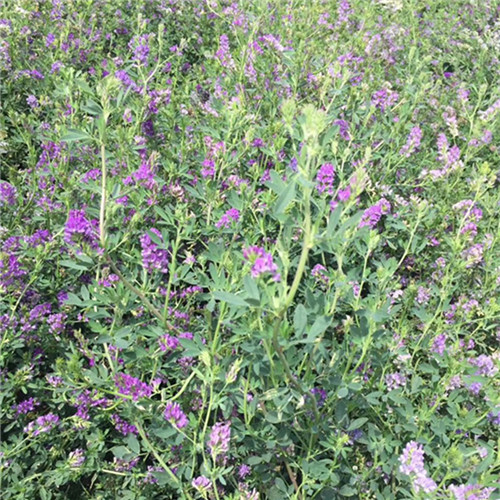How to grow alfalfa grass seeds

Alfalfa planting time
1. Sowing period: The sowing period of alfalfa is generally divided into spring sowing, summer sowing and autumn sowing. The determination of the sowing period mainly depends on temperature, moisture, degree of weed damage, utilization purpose, and existing conditions. Among many factors, moisture is the decisive condition. In places with irrigation conditions, spring, summer or autumn sowing can be used.
2. Northern regions: In the northern regions of my country, there is little rainfall and high evaporation in spring. Sowing in this season is not conducive to the emergence and preservation of seedlings, and weeds are likely to cause harm to alfalfa seedlings during spring sowing. In summer, there is more rainfall, and the temperature rises at this time, and the rain and heat are in the same season, which is very conducive to the germination of seeds and the growth of seedlings. In other words, from mid-June to the end of July is the best sowing time for alfalfa in the north.
3. Cold areas: In cold areas, in order to ensure that alfalfa can survive the winter safely in the year of sowing, the sowing time should generally not exceed 40 days before the first frost at the latest.
4. Saline-alkali soil: When planting alfalfa in saline-alkali soil without irrigation, you need to pay more attention to the sowing time. The distribution of salt in the saline-alkali soil changes with the seasons. Generally, in spring, the salt in the soil is mostly distributed in the upper shallow soil layer, and in the autumn, it moves to the deep soil. Rain and then exposed to the hot sun, the soil surface is very easy to form a hard compacted layer, making it difficult for alfalfa seedlings to emerge. Therefore, the best time to sow alfalfa on saline soil is the end of summer and the beginning of autumn. At this time, the rainy season has just passed, the salt in the soil is washed away, and the soil moisture content is sufficient, which is very conducive to the emergence and preservation of seedlings. The rate is also higher.
 Pingnan Junong Mountain Farming Specialized Farmers Cooperative
Pingnan Junong Mountain Farming Specialized Farmers Cooperative